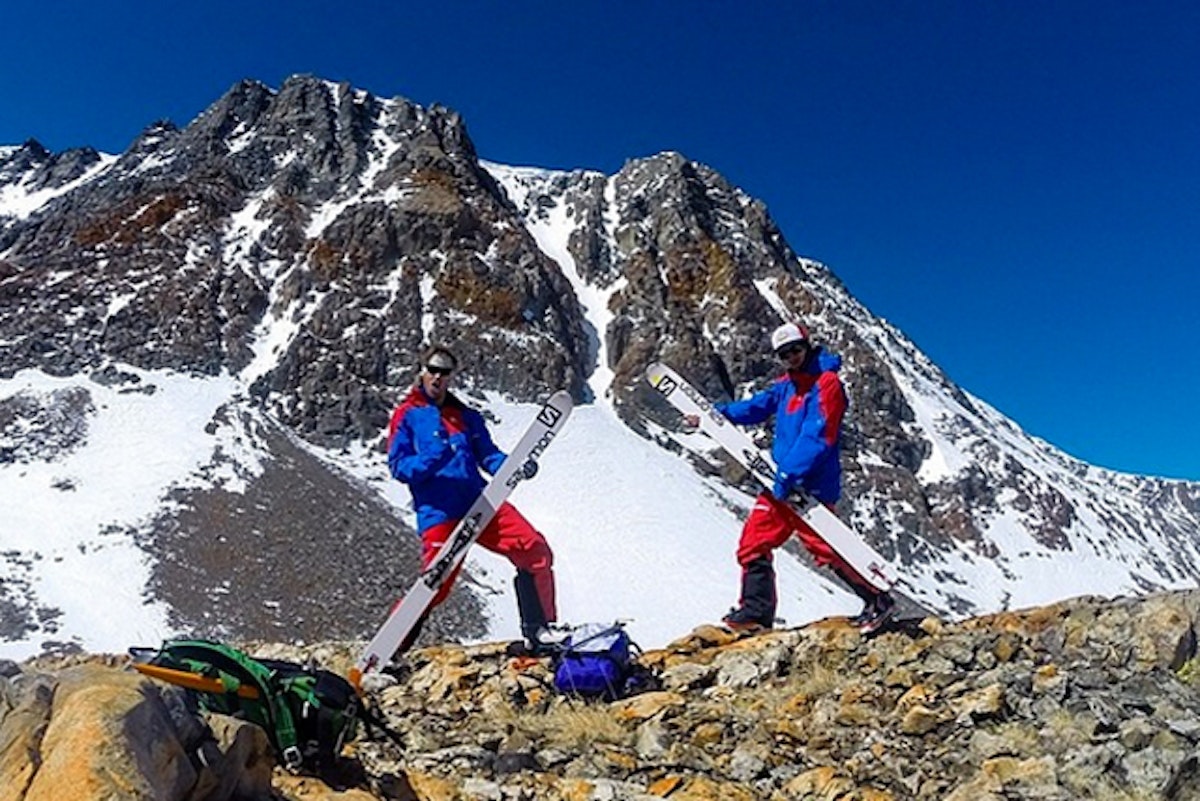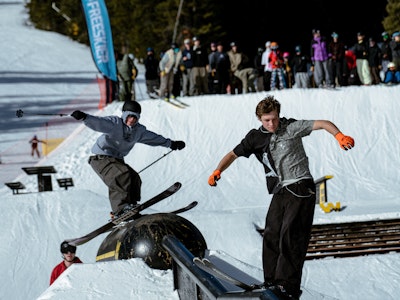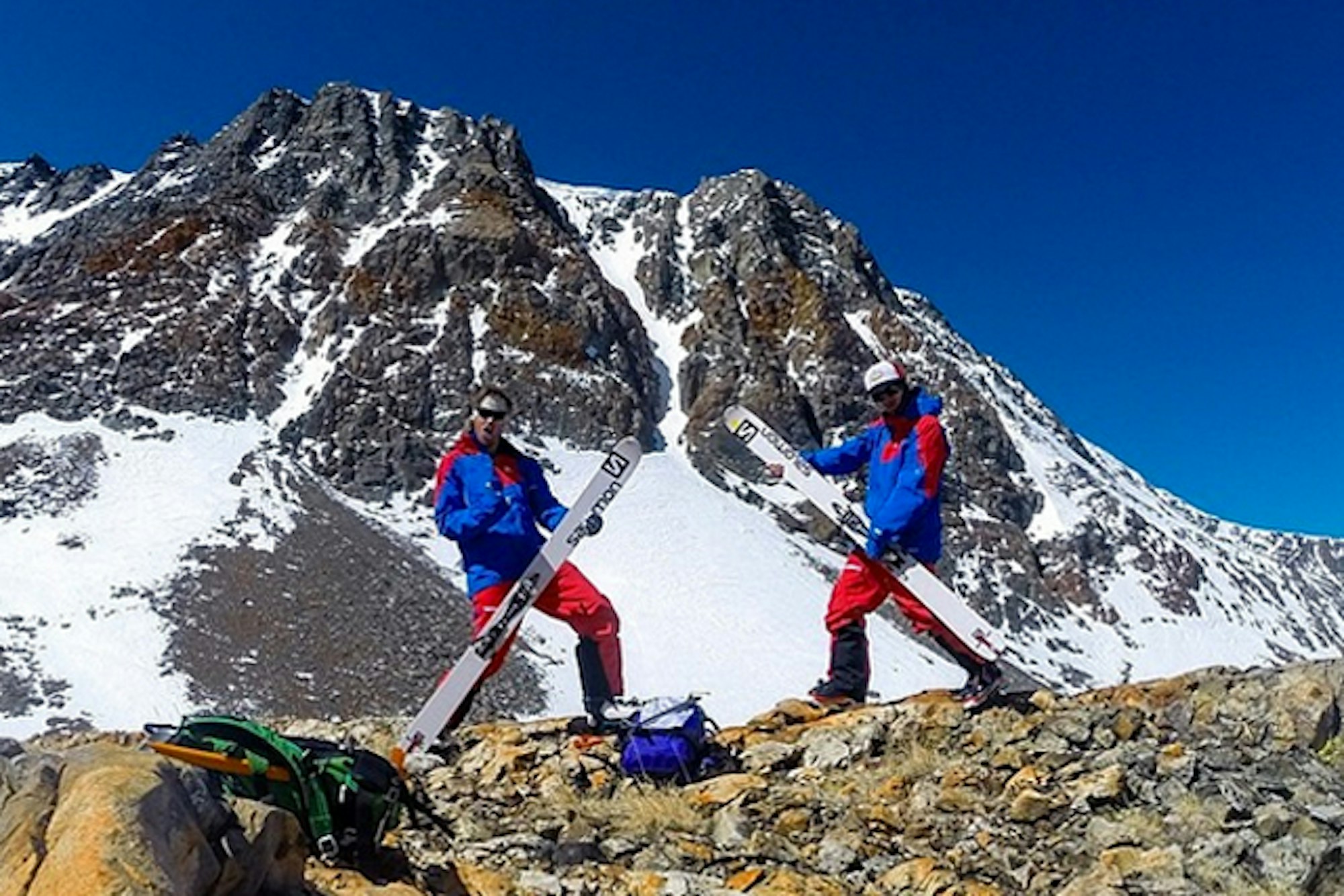While Cody Townsend is often seen shredding razor edge Alaskan spines, popping off powder pillows in British Columbia and dropping massive cliffs, everywhere, he’s taken some time this spring to explore several steep lines in his own backyard, California’s Sierra Nevada Range. We caught up with Cody to talk about the challenges he faced, his favorite missions and his future career as a ski mountaineer.
Hey Cody, how has your spring been so far?
The spring has been quite nice actually, despite the crazy low snow year in the Sierra Nevada. For me, it’s mainly consisted of a solid mix of catching up on a winter’s worth of work with Arcade Belt Co. and quick hit missions to the last patches of snow in the Sierra.
I saw a bunch of photos from your ski mountaineering missions, what inspired you to get out there and ski some spring corn?
The inspiration was twofold. Usually I’m burnt and beat after a full season of filming, especially after the mind-draining and physically taxing spring trips to Alaska. But I got back from Alaska, even after skiing some of the best lines of my life, and all I wanted to do was keep going. The resorts were closed, the snow lines were high, so the only option was to find some elevation.
The second part of the equation is the gear that Salomon has been making these days is so amazing for touring and backcountry adventures. I used to hate any lightweight ski gear because light usually meant flimsy and weak too. The new skis and boots I’ve been on are changing that paradigm and I feel like I’m on normal gear but it happens to be half the weight and engineered to hike up as well as it goes down. It’s definitely making it easier and more fun to get out there.
Can you take us through both of your trips? Mt. Shasta with Robb Gaffney and Kyle O’Neal, plus your trip with Josh Daiek?
We went for the north side of Shasta this year, which is climbed and skied probably a thousand times less than the popular south side. But, that meant a longer approach; more climbing, glaciers, crevasses and a pretty technical line. After a three mile hike up 2,000 vertical of dirt we hit the snow line at sunrise and noticed our intended route was heavily crevassed because of the low snow year in the Sierra. So we opted for a more direct but more challenging approach up the northwest side of Shasta.
As far as Tioga goes, Josh Daiek and I went down with no goals or objectives other than to ski as many things as we could and get into some of the steep and gnarly stuff the High Sierra offers. After an evening scout and trying to game plan around the low snow, we opted to tour up Mt. Dana and ski the Unknown (No Name) Couloir. Seeing ice and a choked off crux that required a mandatory rappel, we found another little entrance around the crux that offered up a few 50+ degree turns and a few turns over some fall-you-die terrain.
After that we hiked up some scree to the Dana Plateau and tried to figure out our next line. We almost dropped into the super steep Power Line Chutes but the low snow would’ve turned us around immediately after the descent and forced a climb right back up to where we came from. Since skiing top down and climbing right back up what you skied is kind of a “no-no” in ski mountaineering, we opted for one last run down into Ellery Bowl. We skied the famous Chute Out, down climbed through a low snow, rocky crux and skied right back down to the road. There, we waited for an hour to hitchhike back up to my truck. Damn tourists don’t like picking people up.
Looks like you had to turn around before getting to the summit of Mt. Shasta. Can you take us through that decision?
Six hundred feet below the summit of Shasta we reached a rime and ice covered scree field. Hurricane force winds were blowing us off our feet. Dropping to our knees and planting our ice axes was the only thing keeping us glued to the mountain. For the final approach we spotted a couloir filled with blue ice and one ribbon of snow bordering the outer edge of the line. As we approached, rocks and rime were raining down on us and it became very apparent that the ribbon of snow we wished to climb was incredibly exposed. With no ropes or ice anchors, we realized that a wrong gust of wind on the climb, one slipped footing or a blast of rime and rocks could’ve sent us down a slip-and-slide of death. At that point, it was an easy call to cancel the summit plans.
What were some of the biggest challenges you faced during these missions?
For me, the biggest challenge was fitness. I spent a month in Alaska sitting on my ass and flying in helicopters; it wasn’t exactly the best training for 8,000 foot climbs at elevation.
You mentioned earlier the low snow totals being a bit of a problem. Any other issues you encountered as a result?
The low snowpack definitely has made things more challenging but the adventures make for better stories. Miles of hiking through the forest on dirt in ski boots and steeper entrances and close out lines that usually go through just make the burrito that much more spicy.
What were the actual snow conditions like out there as you starting skiing?
Shasta was chalky wind-board mixed with some lusciously creamy corn below 10,000 feet. On Tioga Pass we managed to find some legit pow despite weeks of 50+ degree temperatures. It totally blew us away to be skiing pow that late in the season, and on such a bad season at that.
What was your favorite line you skied?
The Super Unknown Couloir off Mt. Dana. There might be a couple names for it as it doesn’t get skied too often but damn was it a fun line. Steep, exposed and a tight little entrance to a 1,500 foot couloir. It was the alternate entrance to the Unknown Couloir.
What was your least favorite?
Least favorite had to be the down climb in ski boots through the forest off of Shasta. Sixty degree temperatures, lava rocks, dirt and down climbing in ski boots make for burning, cramped and painful feet.
Which gave you the most trouble?
For me, the elevation and length of the Shasta climb gave me the most trouble. Even before sitting in Alaska for a month, I was riding snowmobiles and living near sea level in Whistler. Jumping off the couch to higher elevations was as difficult and as stupid as it sounds.
Are you ready to start tackling lines like this with Andreas Fransson?
Oh hell no. What Andreas and company are doing in Chamonix and around the world is unbelievable. It takes a healthy heart of courage and decades of experience to lay it all on the line and ski lines like that. One day maybe, but I’ve got a ton to learn to keep up with any of those guys.
Related: It seemed like a good idea at the time: Biking, then hiking for turns near Tioga Pass




![[GIVEAWAY] Win a Head-to-Toe Ski Setup from IFSA](https://www.datocms-assets.com/163516/1765920344-ifsa.jpg?w=200&h=200&fit=crop)

![[GIVEAWAY] Win a Legendary Ski Trip with Icelantic's Road to the Rocks](https://www.datocms-assets.com/163516/1765233064-r2r26_freeskier_leaderboard1.jpg?auto=format&w=400&h=300&fit=crop&crop=faces,entropy)





![[GIVEAWAY] Win a Head-to-Toe Ski Setup from IFSA](https://www.datocms-assets.com/163516/1765920344-ifsa.jpg?auto=format&w=400&h=300&fit=crop&crop=faces,entropy)

